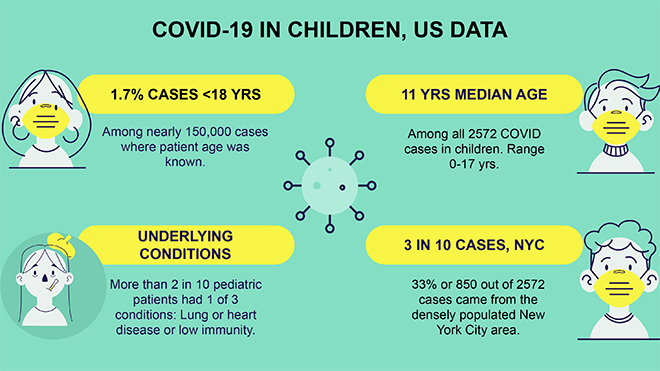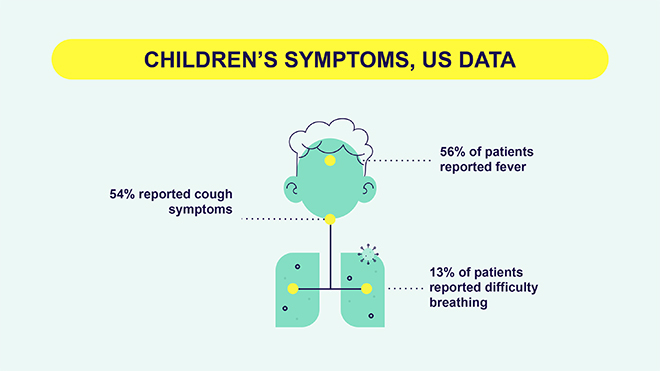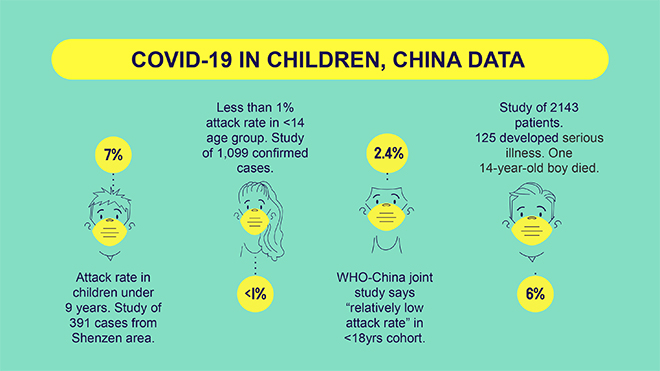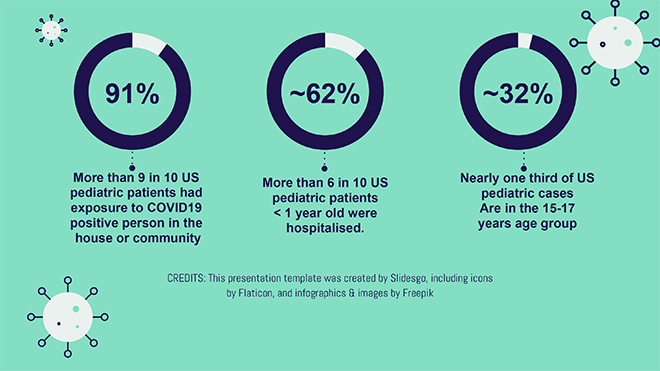
The first
national level data released by America’s Centres for Disease Control and Prevention (CDC) indicate at least one underlying condition in more than two out of 10 pediatric patients treated for COVID-19 and typical symptoms of fever and cough among nearly six in 10 patients. The report suggests that kids are not getting severely sick and aligns directionally with information from China that has moved off its peak. It echoes the trends that White House task force has been noting, based on China, Spain and Italy mortality data — that the very young seem generally resilient, while they continue to caution that nobody is immune.
The CDC report is based on data from 12 February through 2 April across nearly 150,000 confirmed cases in the US of which two percent are children. From the study sample, older children and teens were more susceptible to COVID-19 infection while serious illness and hospitalisations appeared more common in infants. The authors caution that this report should be considered as a preliminary one because details were missing from pediatric cases.
Early data from China too point to the overarching theme of immune system variation with age and the predisposition of older adults to a higher risk of acute viral and bacterial infections. A China
study of 391 cases and 1,286 close contacts in the Shenzhen area shows that children under nine years had an attack rate of 7.4 per cent. Among adults aged 60-69, that number rises to15.4 percent. In another study of
1,099 laboratory confirmed COVID-19 cases from 552 hospitals in 30 Chinese provinces, less than one percent of confirmed cases were in the under the age group of fourteen years.
A late
February 2020 report from the World Health Organisation also suggests that COVID-19 lands a softer blow on children: “Data on individuals aged 18 years old and under suggest that there is a relatively low attack rate in this age group (2.4% of all reported cases).” Within Wuhan, WHO says no children were positive between November 2019 and the first two weeks of January 2020.
In the initial days of the outbreak, when the US data was still very scant, the White House began by studying patterns of Europe mortality data to assess potential infection curves in the country. In the process, the term ‘younger’ and ‘older’ became clearer in the context of the virus’ attack rate. The White House has cited Europe mortality data which shows that less than one percent of all the mortality is the less than 50 years age group. The lion’s share of mortality in Europe is coming from the over 50 age group,
along with pre-existing conditions.
“Why most of the children’s COVID-19 cases were less severe than adults’ cases is puzzling”, write the authors of a
China study that analyzed 2,143 cases of patients under 18 that were reported to the Chinese Centers for Disease Control and Prevention as on 8 February.
If one thing is clear, it is this: When done right and at scale, physical separateness
is blunting the curve. At least nine in 10 children in the US who tested positive for COVID19 had exposure to a COVID positive person in their community. Taken together, insights from real time data are valuable because this pandemic is so new and so much is still unknown. We bring you highlights from a cluster of early studies on the effects of COVID-19 on the young.




The views expressed above belong to the author(s). ORF research and analyses now available on Telegram! Click here to access our curated content — blogs, longforms and interviews.



 The first
The first 



 PREV
PREV


